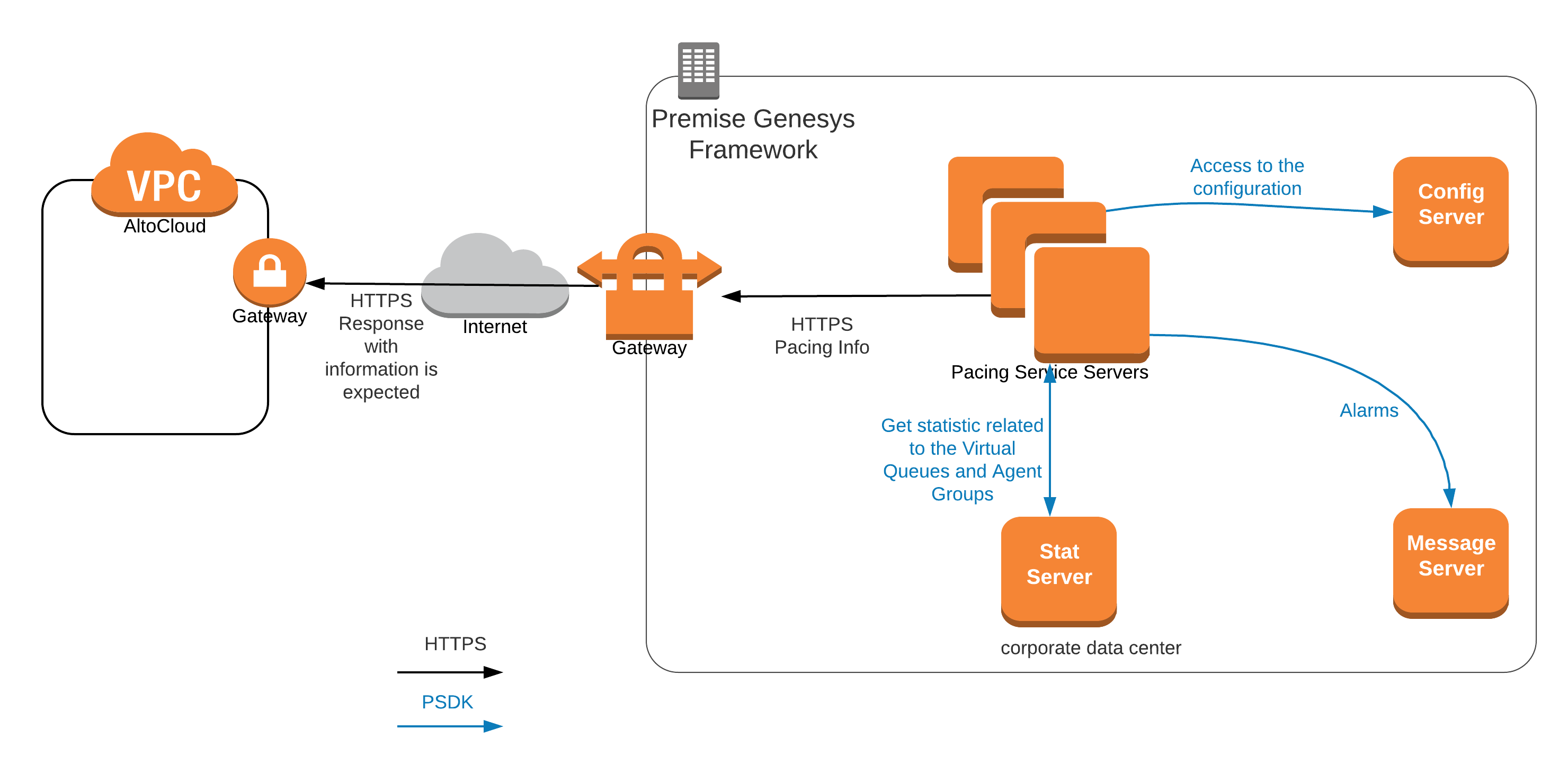Architecture
Read about performance and high availability considerations for Agent Pacing Service.
Architecture diagram
 The Agent Pacing Service connects to only one Stat Server (high-availability pair).
The Agent Pacing Service connects to only one Stat Server (high-availability pair).
Multiple actively running pacing nodes can belong to the same pacing cluster. Under normal conditions, there is only one master pacing node that provides pacing target information to Genesys Predictive Engagement. All pacing nodes are interconnected, and they self-determine which is the master pacing node based on an internal election algorithm.
Performance
Each pacing node is designed to support up to 10,000 pacing targets. The execution of the pacing algorithm does not put significant pressure on either the memory or the CPU. However, as the number of pacing targets increases, so does the size of the HTTP request and the corresponding response between Pacing Service and Genesys Predictive Engagement. For this reason, network bandwidth becomes a concern in terms of system stability.
Problems may occur if the roundtrip of the HTTP package reaches the timeout limit or the pacing refresh period. If you experience performance problems, try tuning your network bandwidth or reducing the number of pacing targets.
- 2 CPUs (Core i7)
- 6 Gb RAM
- 2 Gb of allocated Java Heap memory
Scalability
For nodes belonging to same pacing cluster, the scalability model is N+1. Based on performance testing, two pacing nodes should be sufficient to sustain most deployments.
High availability
This release of Agent Pacing Service works with a single Stat Server HA pair. To ensure high availability in a premises-based environment, install two (2) Pacing Server nodes.
